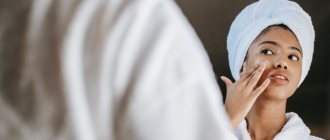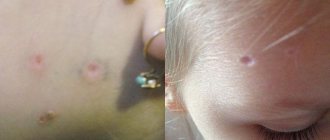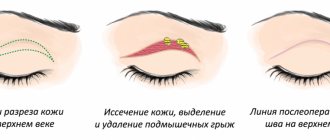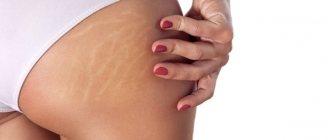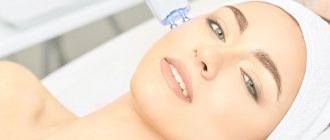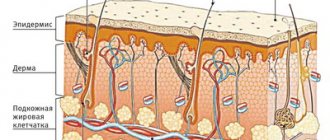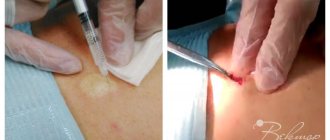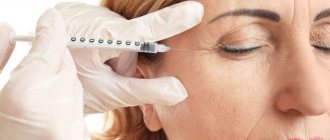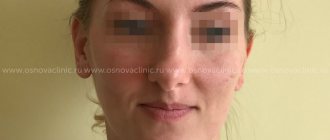Any surgical operation, unfortunately, has a risk of undesirable consequences and side effects, and rhinoplasty in this case is no exception. Knowing and predicting possible complications helps the surgeon make the right decision at the time of their occurrence and choose the necessary treatment for the complete recovery of his patient.
According to medical observations, the incidence of complications after rhinoplasty varies from 4 to 18.9% of cases. And in this regard, it is extremely important to note: the more experienced the doctor, the lower these numbers are found in his medical practice. Tigran Albertovich Aleksanyan is convinced that a responsible and correct choice of your plastic surgeon helps to further minimize the risk of any complications after operations. Today, in clinics and plastic surgery centers, rhinoplasty is considered one of the most popular and financially attractive operations and, unfortunately, specialists of various levels of training undertake it. This is why it is very important to find a surgeon with extensive experience and in-depth knowledge, such as Dr. Aleksanyan.
What are scars?
Literally everyone will have scars on their nose after surgery. Scars are the connective tissue that covers the incision site after healing. The doctor decides where these incisions will be located. Ideally, a closed technique is used. Scars in the nose after rhinoplasty are not noticeable. But sometimes the indications are such that the doctor has no choice but to use the open method. With it, the scars are located in a visible place - the columella and wings.
Over time, the scars become less noticeable and gradually lighten. But if rough scarring is detected, when the connective tissue has grown excessively at the site of the incision, then you should first consult a doctor. There are several types of scars:
- Normotrophic, that is, light and invisible.
- Keloids that are constantly growing. They are red or pink in color, dense and convex in structure. It is imperative to treat such scars after rhinoplasty. The photo is shown below.
- Internal scars may appear after unsuccessful closed rhinoplasty. They can make breathing difficult. Internal scars tend to heal faster.
- An atrophic scar resembles a hole and is white or pink in color. Formed after inflammation.
- Hypertrophic protrudes above the surface of the integument. Often becomes atrophic during formation, becoming less noticeable.
- Subcutaneous scars after rhinoplasty look like bumps. They appear only a couple of months after the operation.
Psychological effect and complications after surgery
Among the risk factors and consequences of rhinoplasty we have listed, we have not mentioned a large area - psychological phenomena. This is a subject of special attention, since the patient should, but is not always ready to, realistically assess the effect of the operation. The problem is that the willingness to accept the result does not depend on reason, but is more determined by temperament and attitude towards one’s own decision. If you expect rhinoplasty, liposuction, or otoplasty to be a means of completely turning your life around, then most likely, these expectations do not have a reasonable basis. Correcting the shape of your nose can improve your assessment of your own appearance, even give you new strength, but it is unlikely to become a critical factor in changing your entire life. People who suffer the most psychological consequences are those who decide to undergo surgery without serious consideration. Patients in this category tend to shift some of the blame onto the doctor, although in most cases the surgeon gives the nose exactly the shape that was agreed upon during the consultation.
Why do scars appear after rhinoplasty?
Human skin undergoes serious tests throughout life. These include harmful living conditions, nutrition, and improper care for her. But rhinoplasty creates particularly stressful conditions, which can become the very factor that provokes the formation of scars. The formation of scar tissue may be due to:
- The person did not take proper care of the skin before surgery;
- Had malnutrition;
- Used cosmetics that were not suitable for him.
It is worth noting that the formation of scars after rhinoplasty can also be a protective reaction of the body to a gross invasion from the outside. Infectious diseases are not the last factor.
How to properly care for your skin before rhinoplasty?
Skin is divided into three types: dry, combination, oily. How to prepare your face before surgery? We decided to look at the main nuances of caring for different skin types.
To prevent scars from forming after surgery, owners of oily skin are advised to perform a deep facial cleansing. This is a mandatory procedure. If the skin is oily and clogged pores are not cleared, then after surgery, the cast will create ideal conditions for the development of infection. And taking into account the use of septic agents, the pores will simply close. As a result, many, after removing the plaster, observe the following picture: the nose is covered with pimples with pus, after which scars and pits remain. Here it is - the “greenhouse effect” in action!
Dry skin requires nourishment with masks and creams. Let us only note that the day before the operation you stop using any cosmetic products and only perform the necessary hygienic procedures. But during preparation, use products that have already been tested through personal experience and will not cause allergies or oily skin.
People with combination skin type usually have a variety of products in stock for literally all occasions. In this case, we can advise paying attention to both approaches and combining them. After cleansing your face with a cosmetologist, you can easily take care of facial hygiene and normal nutrition and hydration.
Rhinoplasty - making a decision about nose correction
The danger and depth of the consequences of rhinoplasty are within the normal risk range for plastic surgery. The risk cannot be completely denied, but the decision about surgery should be made taking into account this risk and the importance of the result for you. There are indications for rhinoplasty that are not related to the aesthetic part - difficulty in nasal breathing, perforation of the septum, and here the decision in favor of the operation has much more logical justification. But to correct the tip of the nose, sometimes a well-developed makeup system or non-surgical methods are enough. If you expect surgery to correct obvious defects in the shape of your nose, then rhinoplasty will give an effect that will become the basis for you to re-evaluate your own appearance. But do not forget that the result will be visible only after several months of rehabilitation, when the swelling goes away, the accumulation of blood under the skin resolves, and normal blood circulation in the tissues is restored.
- Call
- Make an appointment
- Back call
- Ask a Question
Skin after rhinoplasty
After rhinoplasty, the skin can behave very strangely. So those with oily skin may find areas of flaking and tightness. Those with dry skin may be surprised to find that their skin has become oily in some areas. All this is explained by the body’s reaction to the operation and a kind of stress.
A large number of pimples after rhinoplasty reflects the presence of skin inflammation. The best option would be simple hygiene: wash your face regularly, but carefully. Finally, use a stiff towel when drying off. With its help you will eliminate the remains of dead skin cells. Simple washing, especially with tar soap, will destroy bacteria and promote accelerated wound healing without scarring.
It takes up to three months for the skin to fully recover after rhinoplasty, depending on how the body recovers. To prevent excessive scarring, do not use creams during this time so as not to interfere with the cleansing of the skin.
Soft scrubs are also relevant in the fight against scars. They not only cleanse the skin of impurities and dead skin cells, but also promote accelerated regeneration and renewal of the skin. They should not have any heating or cooling effects, because the skin after surgery is already overly sensitive, and unnecessary irritants will only strengthen a person’s defense mechanisms. As a result, scarring may become more intense.
Before using any cosmetics, ask your doctor if it is safe to do so. Sometimes the patient’s indications are such that the only available means of cleansing are baby soap. Therefore, in order not to cause complications, it is necessary to conduct a consultation in this regard. If the doctor allows, you can perform light massage procedures.
The dangers of rhinoplasty - we assess the risks of complications
When turning to a plastic surgeon to correct the shape of the nose, many expect, if not a miracle, then an immediate and certainly guaranteed effect. Rhinoplasty is a part of plastic surgery in which the same rules, patterns and probabilities apply as in any surgical intervention.
Are there any real risks to rhinoplasty—the risk of certain and mostly predictable health or appearance consequences? No conscientious surgeon will convince the patient that the operation is very simple, and that guarantees can be given for its successful completion and subsequent planned result.
Surgery, like all medicine, is not an exact science. It does not give a result guaranteed by calculations, and the surgeon can only give you statistics that indicate the likelihood of complications. Plastic surgery is characterized by the use of minimal risk techniques, since the operation itself is most often justified by indications that are not critical to life and health. Rhinoplasty, like blepharoplasty and other surgical methods for correcting appearance, can be used specifically for aesthetic and psychological purposes.
Will scars appear or not?
This depends on a number of factors. Not many patients know that, in addition to the peculiarities of the body’s reaction to the appearance of scars after rhinoplasty, the following can affect:
- Type of transaction. Open or closed, primary or secondary - all this affects the appearance of the scar. By the way, with a secondary operation or complete reconstruction of the nose, the scars will be more noticeable. This is due to the fact that the doctor already has to work with damaged tissues.
- Place of impact. The most noticeable scars are on the wings and on the columella.
- Thickness, skin type. Thick, dark skin is more susceptible to severe scarring.
- The skill of the surgeon.
- The age of the person. Before the age of 18, the likelihood of complications associated with tissue proliferation is enormous. But over the age of 40, tissues take longer to heal. The scars are more noticeable.
Scar care
Scar care after rhinoplasty is initially limited by the condition of the skin. In particular, in addition to hygiene procedures and specially prescribed medications, the use of other means is strictly prohibited. Here's how to deal with scars if they already exist:
- The first couple of weeks, regular treatment of the incision area is performed. This is done by means that help avoid inflammation due to infection.
- After the crust disappears, the doctor prescribes special ointments or creams that reduce the scarring process without surgery.
- After complete healing, so that the scar is at the same level as the skin, many people use chemical peeling.
- To reduce density, phonophoresis is relevant.
- Keloid scars are treated with corticosteroids.
- Laser resurfacing is used to remove old scars.
- In particularly advanced cases, the doctor may prescribe an additional operation that will reduce the width of the scar, level its surface, or move it to another, less noticeable location.
If you have scars after rhinoplasty inside your nose, what should you do in this case? The answer is simple: first of all, go to the doctor for an examination. He will already prescribe treatment according to the situation. It is strictly prohibited to use any medications or perform manipulations on your own.
